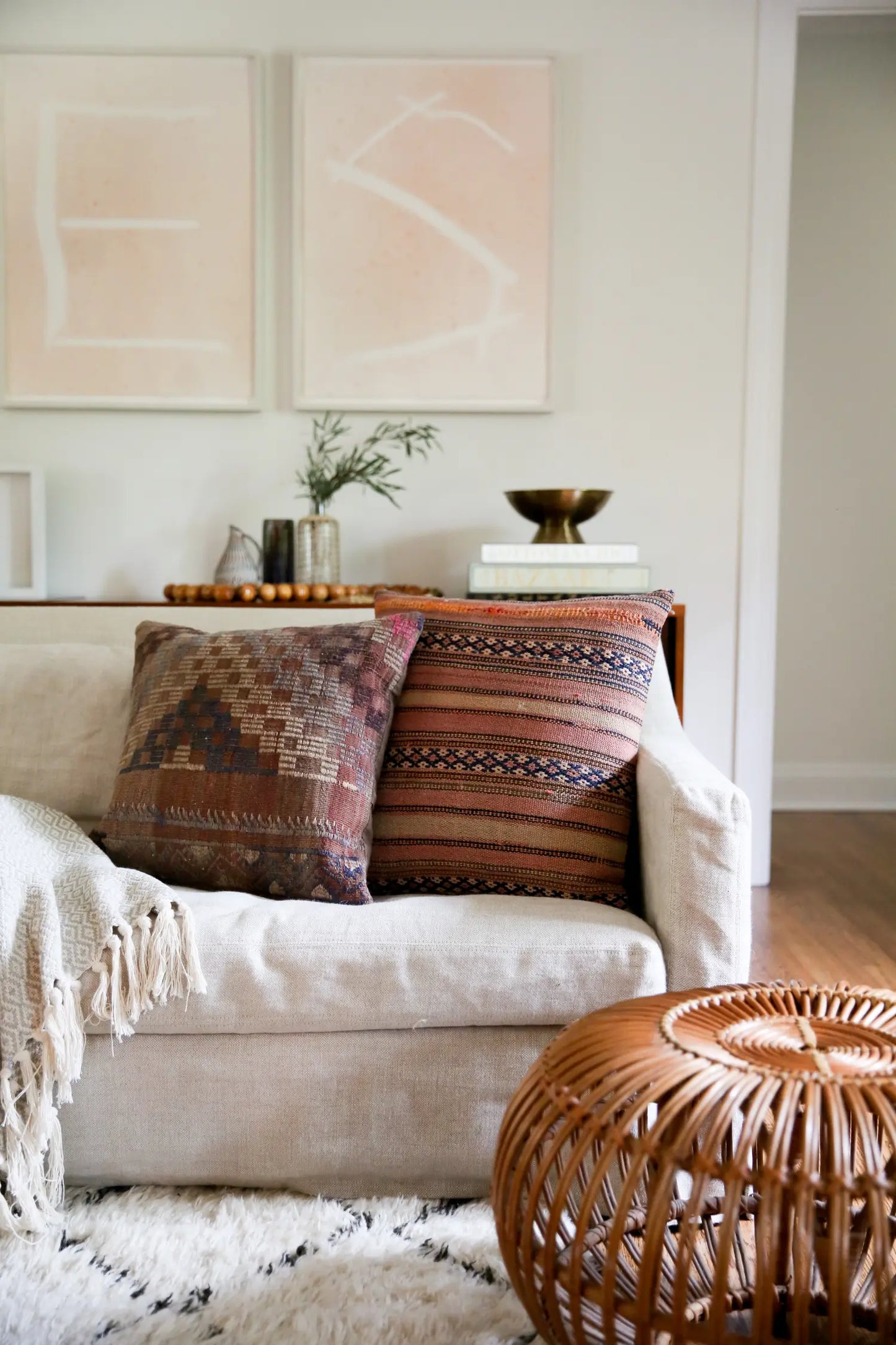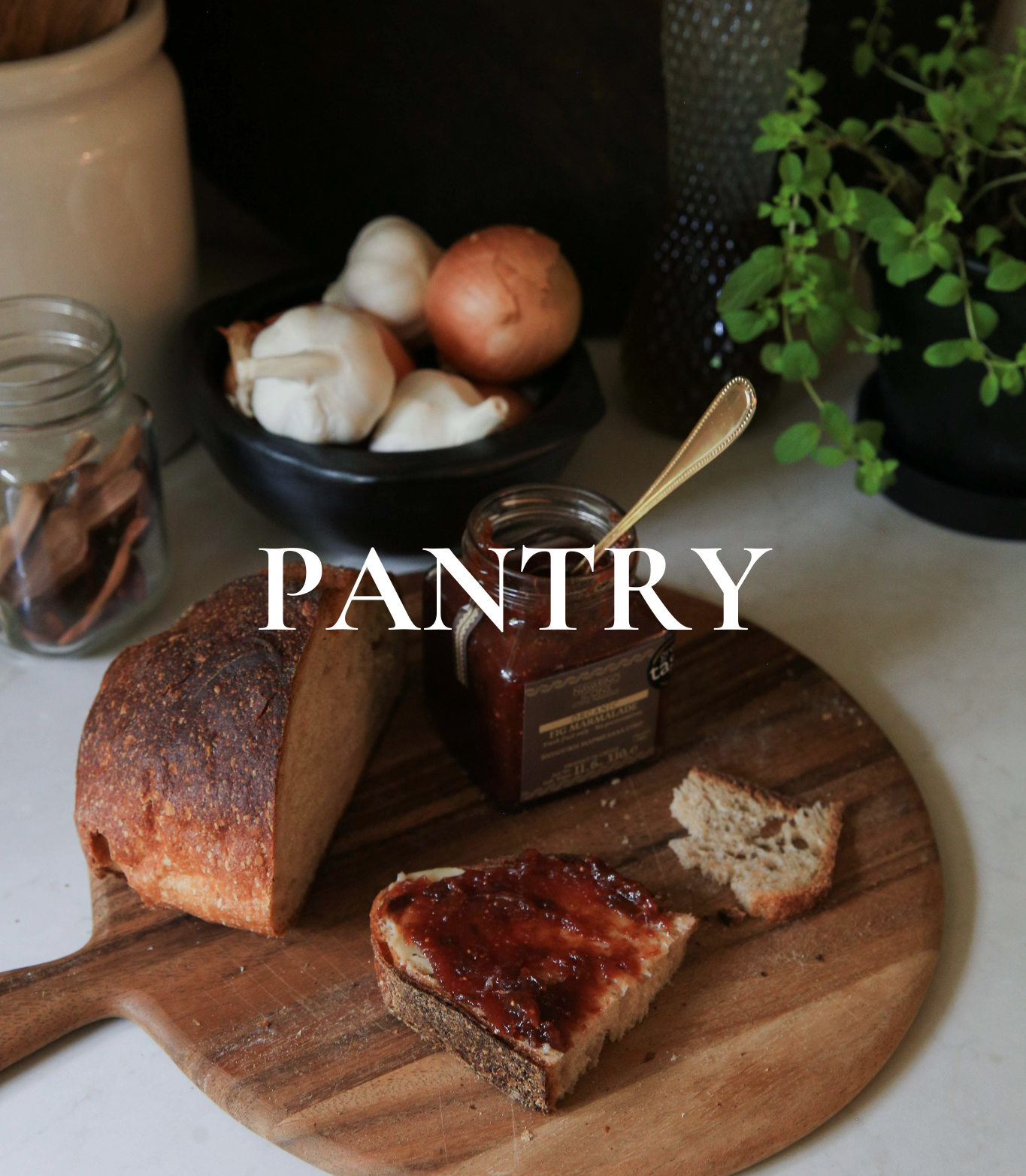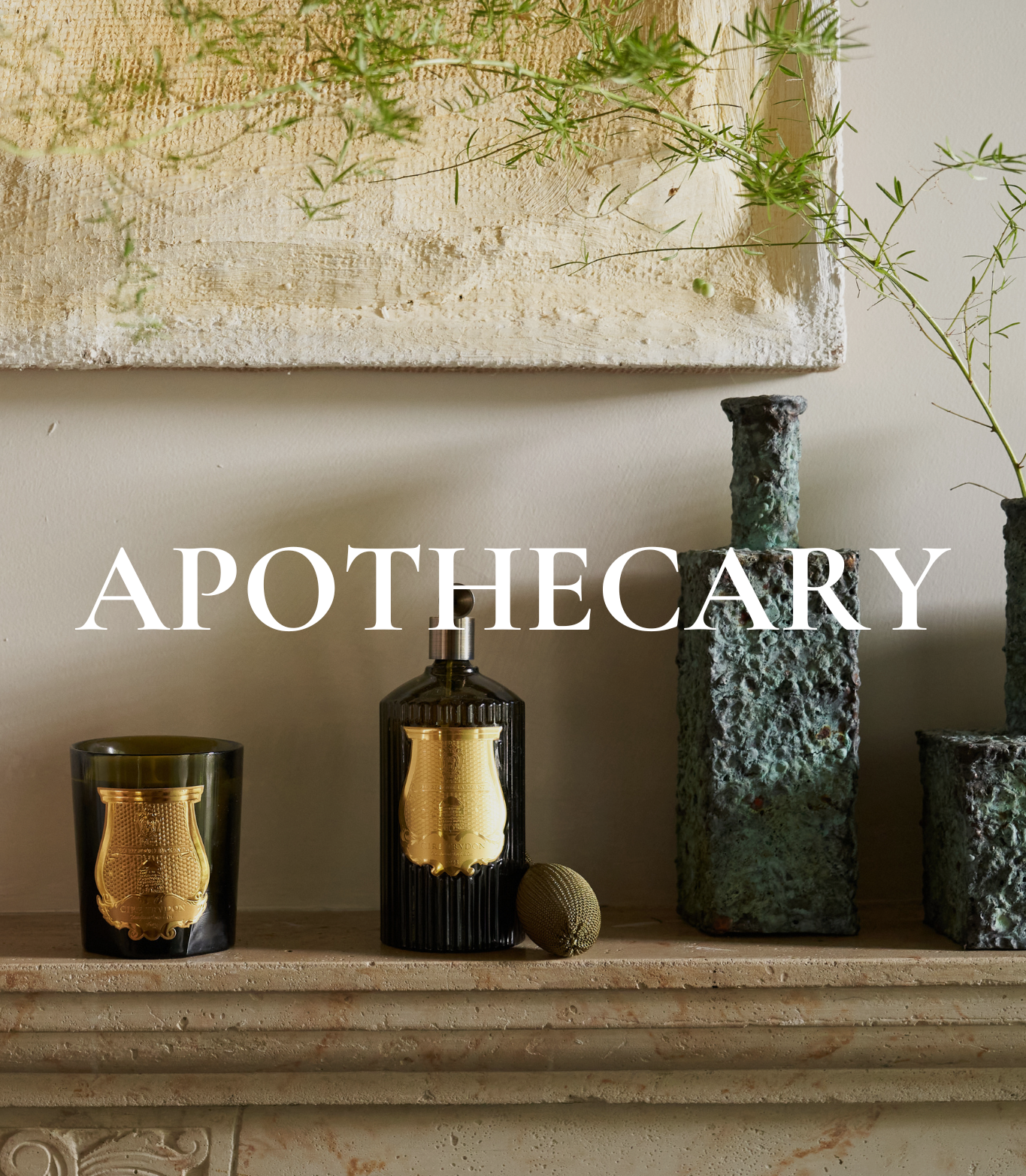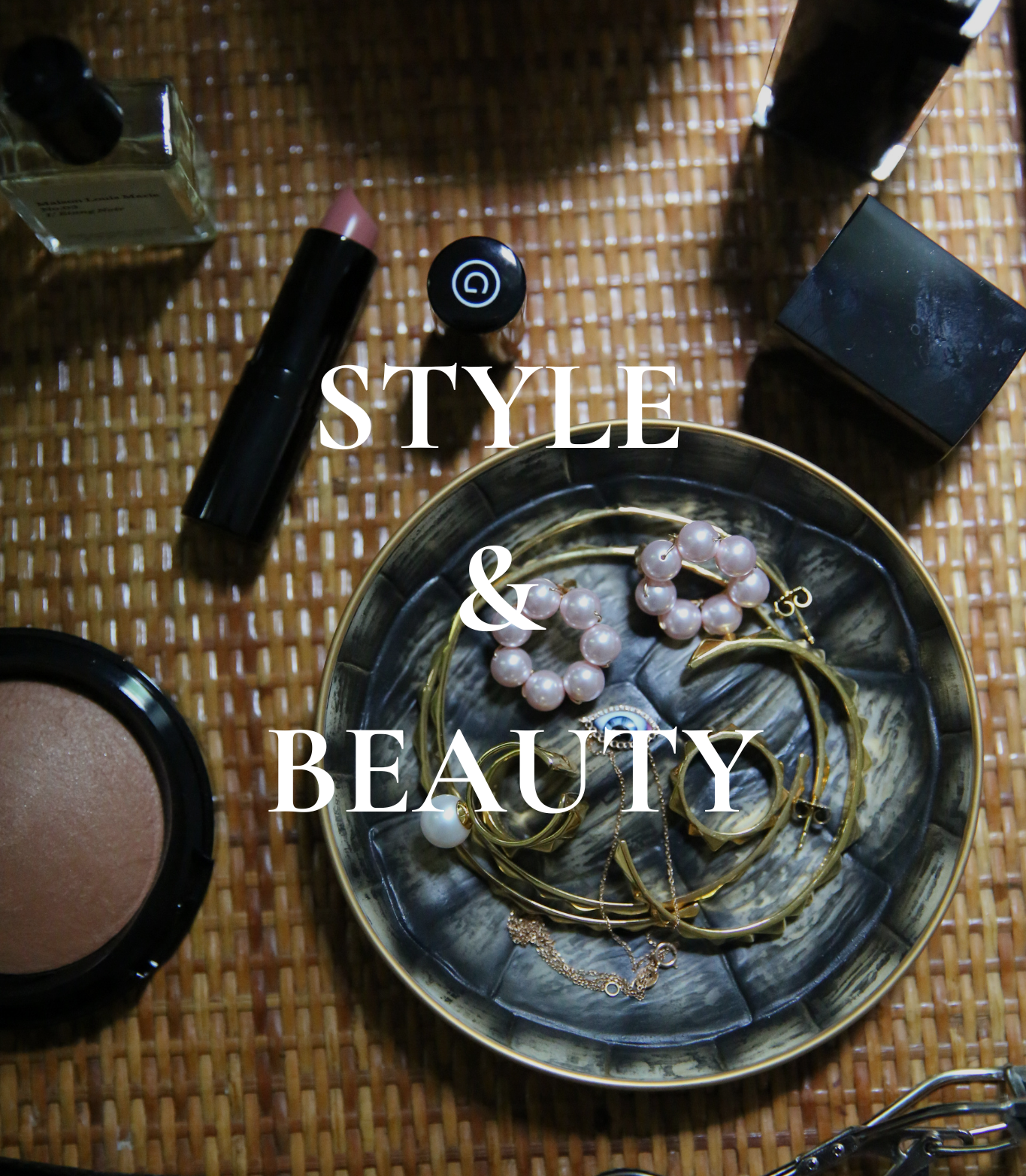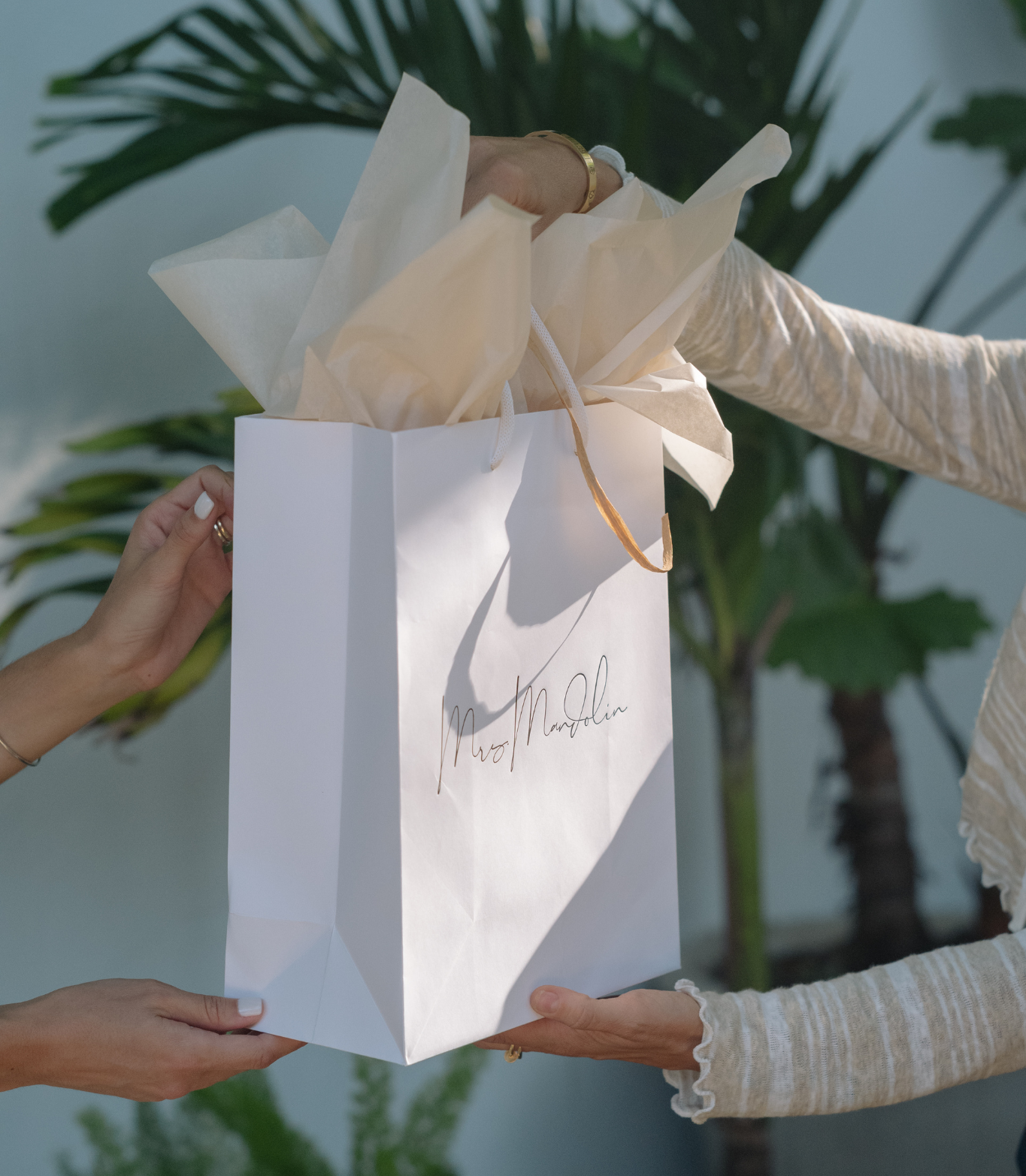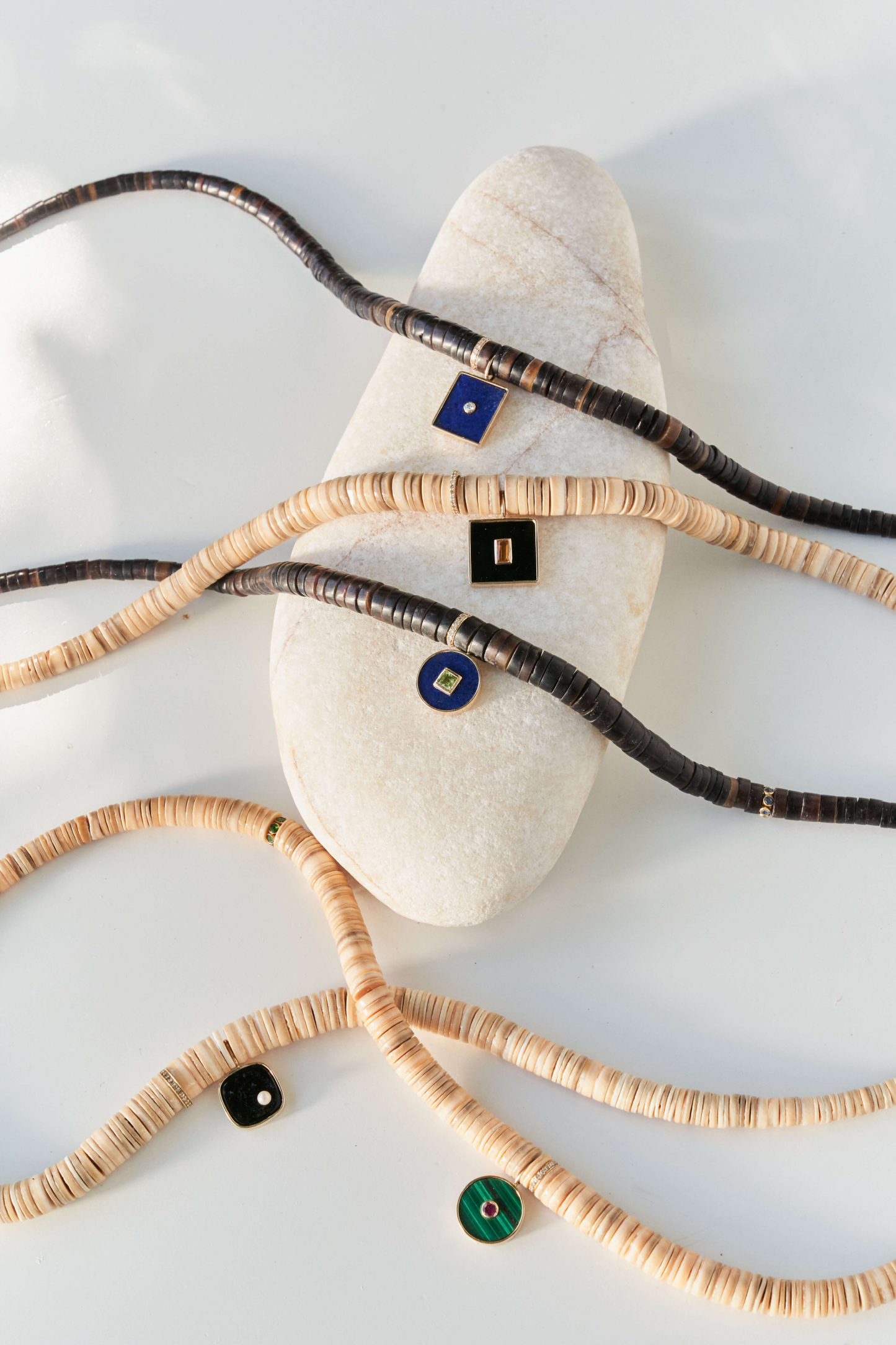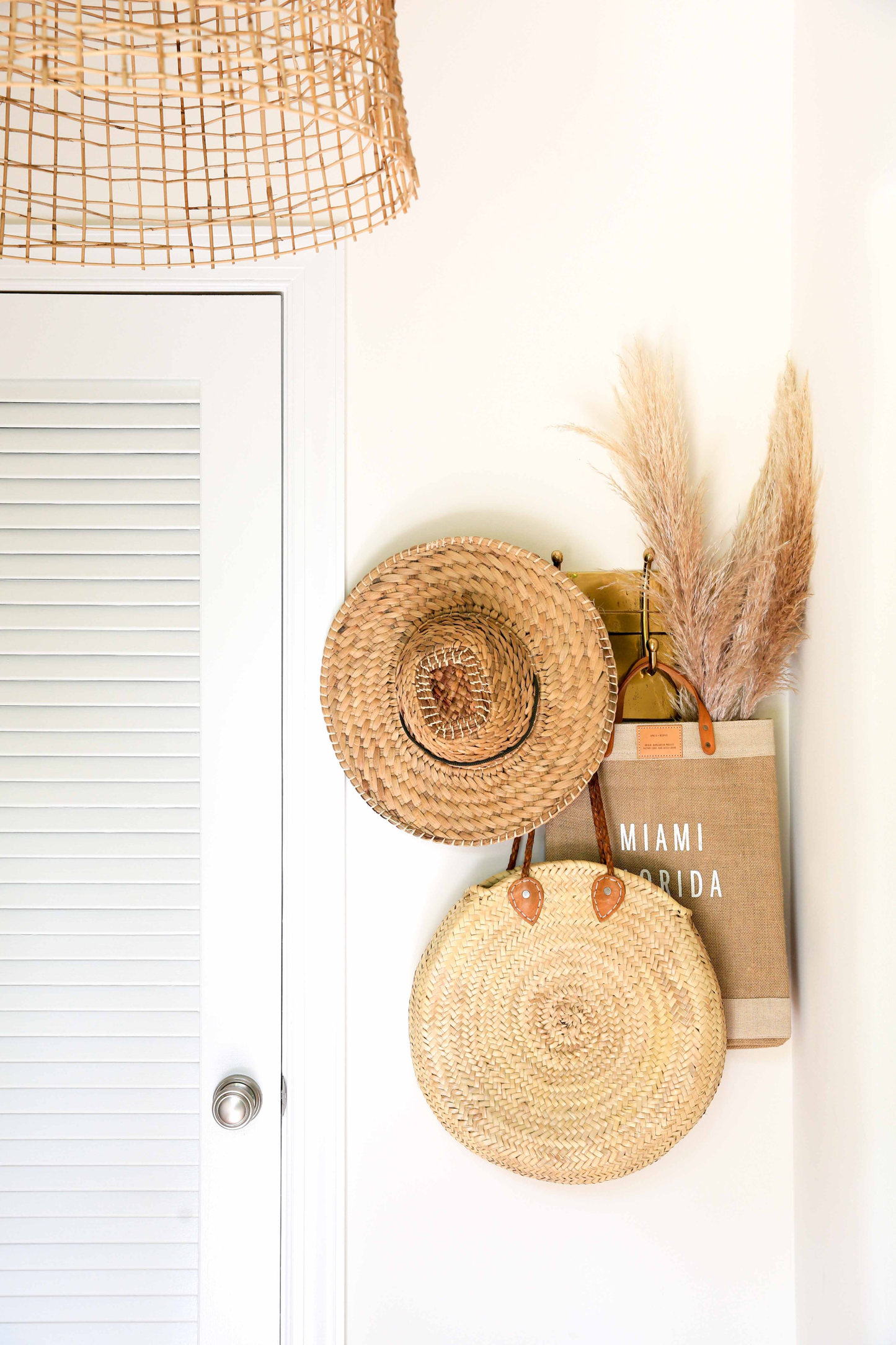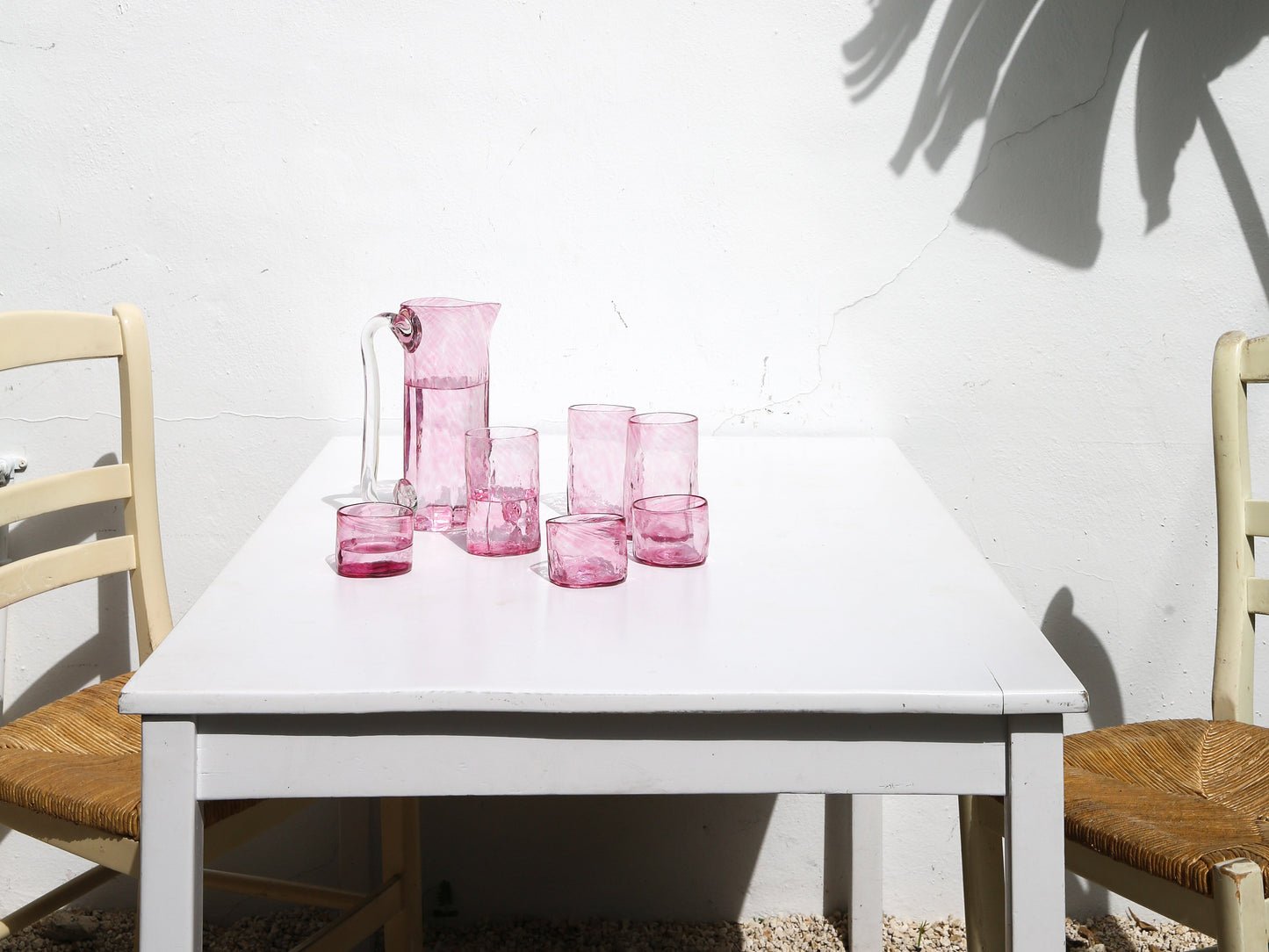
A well-dressed table tells a story before the first bite. When the stems are a gentle rose hue, that story feels instantly warm and welcoming.
Use Mrs. Mandolin's practical playbook to place, pair, and care for your pink wine glassware set so every pour looks as thoughtful as the menu. Let's start!
Choosing Your Glass Shapes
Glass shape is function first, beauty second. Select bowl shapes that complement what you love to pour, then verify that the silhouette aligns with the rest of your setting. (We'll layer in color soon.)
This is also the moment to add one accent piece of pink drinkware—it keeps the look intentional without overwhelming the eye.
Here's a table for easier matching the bowl to the wine:
|
Wine style |
Best bowl |
Why it works |
|
Full reds |
Tall tulip |
Deep bowl gathers aroma and channels it straight to the nose. |
|
Light reds & bold rosé |
Flared tulip |
Wider lip softens tannins and shows color. |
|
Crisp whites |
U-shaped medium |
Smaller surface keeps the temperature steady. |
|
Sparkling |
Narrow flute or coupe |
Protects bubbles; coupe adds vintage mood. |
Mrs. Mandolin's tip: If you're serving several styles at one meal, select two shapes that share a common foot or stem detail. That single thread unites the set.
Choose Stem Height Deliberately
- Long stems keep fingerprints off bowls—ideal for candlelit dinners.
- Short stems feel casual and store easily.
-
Stemless glasses save space but require a cooler spot on the table because warm hands can quickly raise the temperature of the pour.
Bring the Color In
Add a first pop of blush with the Pink / Clear French Wine Glasses – Vintage. The clear stem grounds the tone and leaves room for other shades to emerge.
If you serve sparkling, complement that base set with the French Pink & Clear Champagne Glasses.

Pairing with Dinnerware & Linens
Color decisions feel easier once the glasses are on the table. Think of them as the hero piece, then build a muted palette that lets the tint breathe.
- Start with neutral: clean white or sand-toned stoneware reflects light back through the glass, keeping pink from turning muddy.
- Repeat the shade sparingly: one blush dessert plate or a dentelle side plate adds cohesion without veering monochrome.
- Balance temperature: brass flatware, terra-cotta chargers, or beige linen runners warm the scene; slate gray napkins cool it.
- Layer texture for depth: pair smooth glaze with woven placemats. The contrast stops 'all glass' reflections in photos.
-
Add one organic accent: eucalyptus sprigs or rosemary stems, placed under a knotted napkin to break up straight lines and echo the Mediterranean spirit of the collection.
Quick add-to-cart helpers:
Grouping Pink Wine Glasses by Height & Form
Visual rhythm matters as much as matching patterns. Follow these layout steps to keep the table visually appealing and not crowded.
Map the Heights
Line stems in a gentle arc: tallest in the center line, medium toward corners, shortest nearest each diner. The eye moves fluidly, and conversation partners keep an unobstructed view.
Create Odd-Number Clusters
Trios feel gathered, not forced. For six guests: two clusters of three (tall, medium, short) placed at opposite ends.
Mix Old and New
Slip one set of pink glass drinking glasses, we like the Pink Swirl Optic – Vintage with newer stems for a collected look. Their optic pattern catches candlelight, adding a sense of elegance.
Allow Breathing Room
Glasses require 3 cm of space between the rims to avoid accidental knocks and water spots. If space is tight, remove the dessert coupe until later service.
Think in Diagonals for Narrow Tables
Stagger heights corner-to-corner rather than front-to-back. Guests can still reach each glass comfortably, and nothing obstructs the centerpiece.
Mrs. Mandolin's shortcut: snap a quick overhead photo before guests arrive. If one area feels heavy, adjust stems, not plates—it's faster and avoids fingerprints.
Ready to Style?
Your table is almost set—complete the look with our curated Glassware Sets in Serveware & Utensils. Explore our pieces that work, from weekday pasta to candlelit celebrations. Shop now and enjoy later!
Frequently Asked Questions
How rare is pink glass?
Early 20th-century factories produced far fewer blush pieces than they did clear or green ones. Surviving sets, especially in flawless condition, are scarce and command higher prices.
How old is pink glass?
Mass production peaked between 1929 – 1939 during the Depression‐glass era, though hand-blown roseware predates that window by decades. Collectors prize both periods.
How to identify glass quality?
Hold the bowl to daylight: high-grade crystal stays clear and shows a faint prism. Tap the rim—quality rings, lower-grade thuds. Check for consistent thickness and polished foot edges.
Why is pink glass more expensive?
The blush tone required manganese or selenium additives, which were costly even at the time. Limited runs, combined with modern collecting trends, have driven today’s market value.

